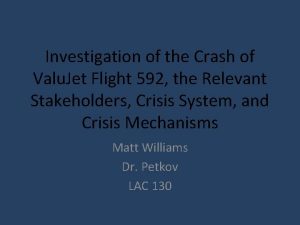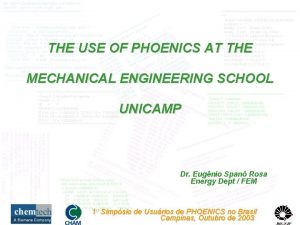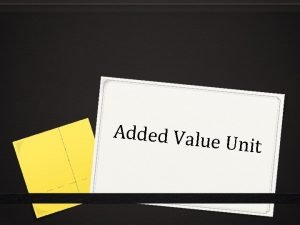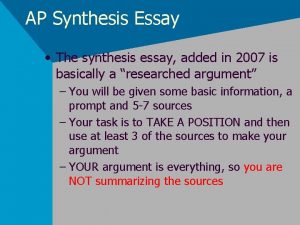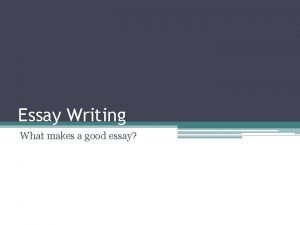Added Valu e Unit The Added V essay










- Slides: 10

Added Valu e Unit The Added V essay whichalue Unit at National 4 extended w compares two text is a 700 -800 word topic, the asritten text. It is up to t s, one of which is an he pupil pect wh themselves ich will be compared ato choose the , deciding w hich is bettned the texts r.

What you need to do: 0 Read straightforward texts 0 Select relevant information from the texts 0 Evaluate the texts, using some appropriate critical terminology 0 Present your findings 0 Respond to questions SQA requirements: http: //www. sqa. org. uk/files/nu/Cf. E_Unit_N 4_English_Adde d. Value. Unit. pdf

Added Value Unit: What exactly do I have to do? 0 Choose a topic to investigate 0 Read about that topic, using at least two different sources 0 Select key information from each source (needs to demonstrate understanding, analysis and evaluation skills) 0 Write about what you have learned (700 -800 words) 0 Answer some questions orally

Added Value Unit There are three things your essay must do: 1. Evaluate the reliability of a source 2. Evaluate the usefulness of a source 3. Identify features of writer’s craft

What do I need to know? 1. Be able to evaluate a source, and decide how credible information from that source is Before you begin to study a text in detail, ask yourself: is it a reliable, useful and well-written piece of writing? When we read information, it is important to know where it comes from (its source) as this will help us decide how trustworthy the information is.

Evaluating a source – is it reliable? What should I be looking for? Yes! Unbiased Objective Balanced Fair Credible No! Opinionated Subjective One-sided Unreasonable Unconvincing

What do I need to know? 2. Understand how a piece of writing is structured Before you begin to study a text in detail, ask yourself: is it a reliable, useful and well-written piece of writing? When we read a text, it is important to consider whether or not the information contained within the text will actually help us with our task. Does the text contain varied and useful information?

Evaluating a source – is it useful? What should I be looking for? Statistics Surveys Examples Results/consequences Scientific research Expert opinion Personal Experience (anecdote) Eyewitness accounts Interviews For and against Advantages and disadvantages

What do I need to know? 3. Be able to identify and analyse features of the writer’s craft Before you begin to study a text in detail, ask yourself: is it a reliable, useful and well-written piece of writing? The final aspect we need to consider is the quality of the writing and the various techniques the writer has employed in order to present his/her information.

Evaluating a source – is it well-written? What should I be looking for? Positive and negative word choice Titles / sub-headings Imagery – metaphor, simile, personification Questions and rhetorical questions Sentence structure Topic sentences Power of 3 Punctuation Techniques such as alliteration, onomatopoeia, oxymoron. . . Exact statistics Linking words and phrases Quotation
